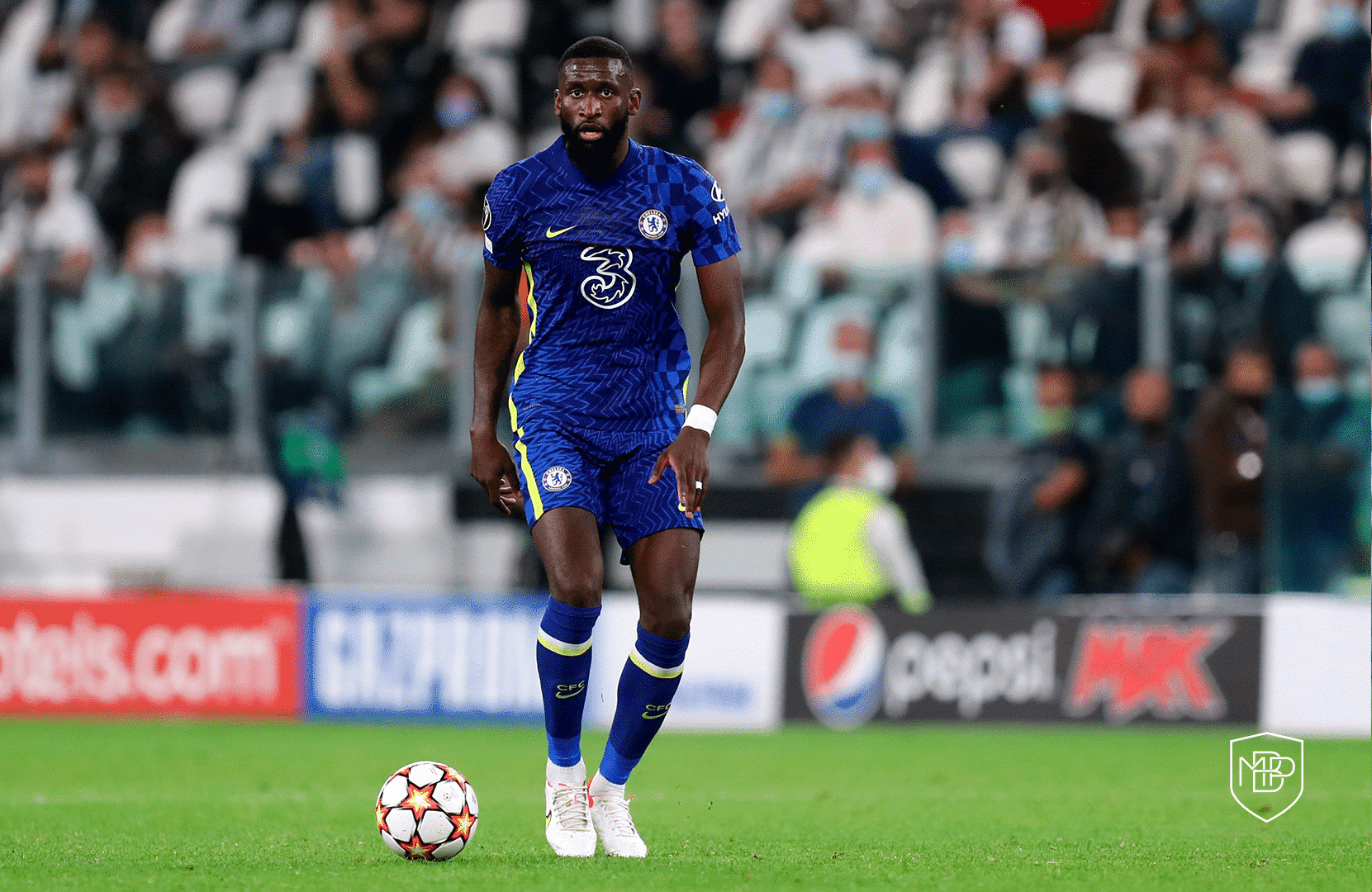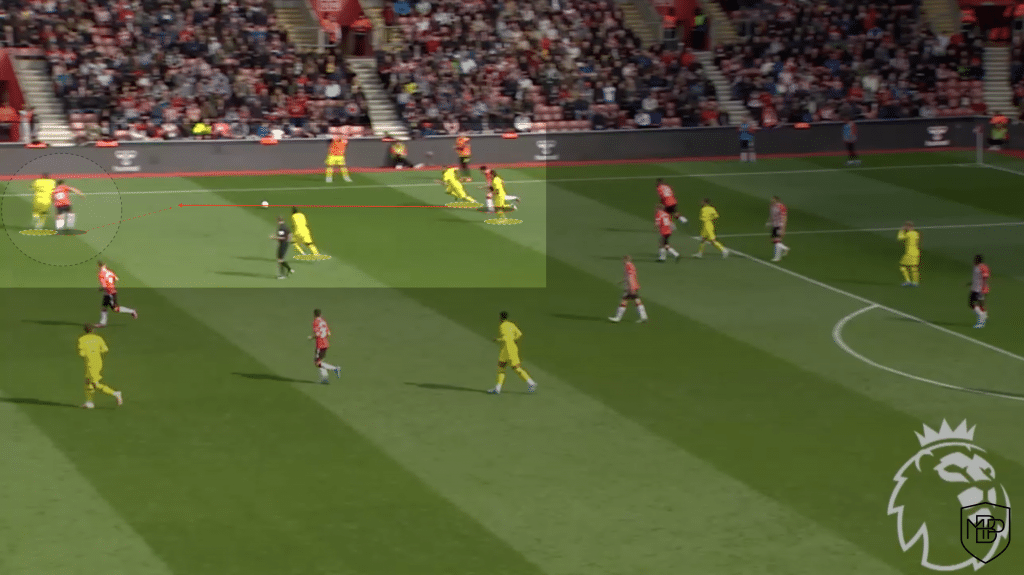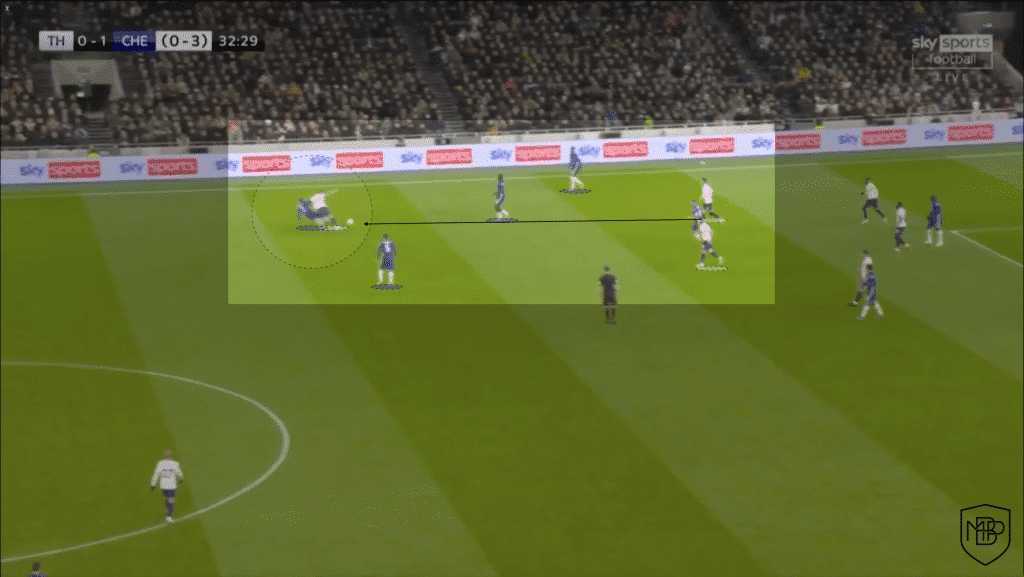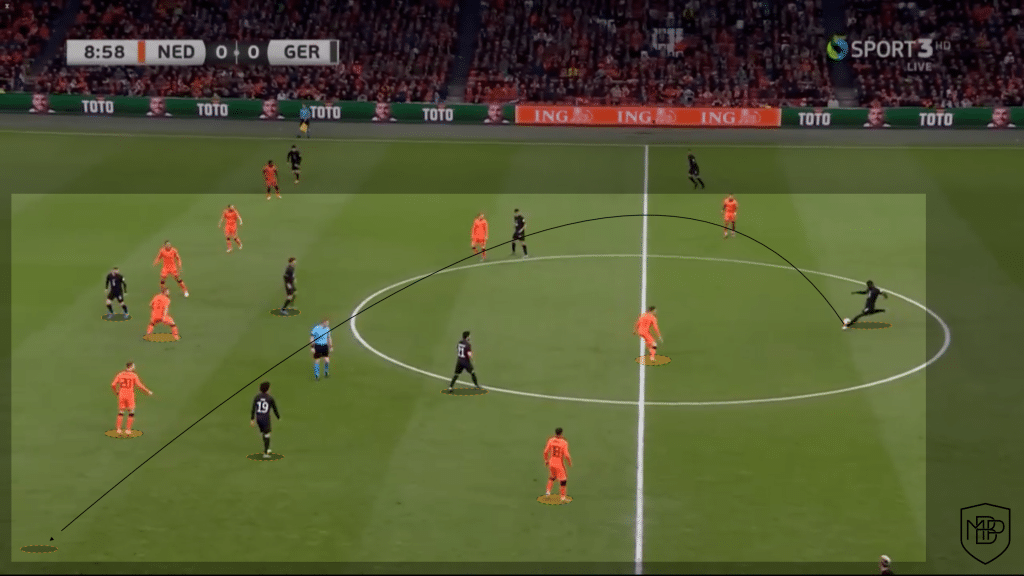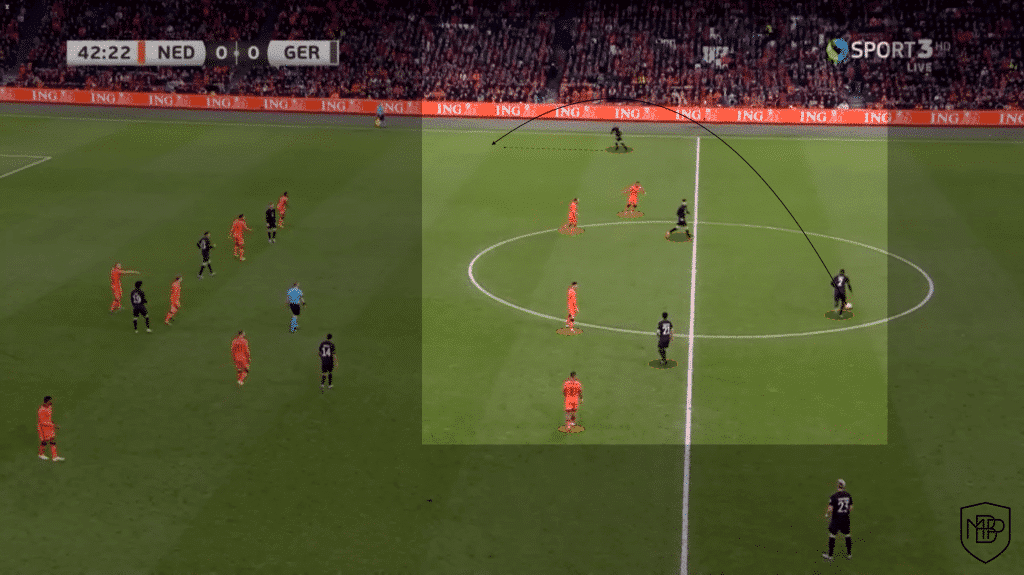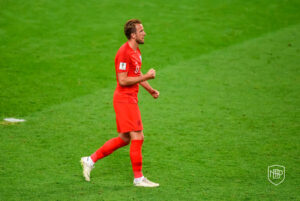Antonio Rüdiger is all but set to join Real Madrid next season. The 29-year-old centre back will join the La Liga champions having established himself as one of the world’s top centre back’s after two brilliant seasons at Chelsea FC.
The addition of Rüdiger will strengthen the Real Madrid defence, giving Ancelotti a range of tactical possibilities, such as a possible line of three centre-backs or the redeployment of Alaba to left back.
For this reason, at the MBP School of Coaches, we are going to analyse what Antonio Rüdiger will bring to Madrid, both on an individual level through the fundamentals of the game, as well as from a tactical perspective.
Individual Tactical Analysis
In order to analyse the German, we must first highlight his most developed structures, as they will have a great impact on his behaviour on the pitch.
The first structure that stands out is his conditional capacity. Rüdiger is a physical prodigy, capable of covering large spaces in behind thanks to his physical stature and his speed of movement, both in short and long distances.
In addition, we must also highlight his cognitive ability. The centre back has become a fundamental part of his team’s ball distribution, thanks to his overwhelming ease in finding the free man and the favourable spaces for progression.
Now that we have introduced the different structures that characterise the player, we will explain how they affect his behaviour on the pitch through MBP’s fundamentals of the game.
The first to analyse is the defender’s ability of ‘Covering The Center Back Or Full Back That Is Defending The On-Ball Opponent’. As well as knowing when to apply the fundamental, Rüdiger is capable of winning the ball if his teammate is beaten by the opponent.
The second fundamental, which the player masters perfectly is the ‘Reducing The Space From The Opponent Dismarking In Support To Feet’. In situations where his direct opponent makes a supporting move to receive to feet, the centre back identifies whether he should reduce the space or not (this will depend on whether there is an opponent who can run into the space behind). Furthermore, if he does reduce the space, the defender has an incredible ability to anticipate and steal the ball.
Thirdly, one of the fundamentals that he has used most in recent times in the Premier League and at the international level, and which in turn is indirectly caused by the defensive structure of both teams, is ‘As The First Center-Back, Defending The Front Post When There Are No Attackers To Mark’.
By playing with three centre backs and with Rüdiger on the outside of the three, the German is in charge of defending the near post whenever he has no attacker to mark. Given his conditional capacity, and especially his jumping power, the centre back is a wall, and does not allow any balls to pass by him.
Finally, by analysing his behaviour on the ball we can see that Rüdiger is a differential element in his teams’ build up thanks to his cognitive ability.
The centre back has a brilliant command of different essential fundamentals at this phase of the play, such as: ‘Making Safe Diagonal Passes To Teammates On The First Line’, ‘Fixing The Opponent To Create Numerical Superiority’ and ‘Switching The Point Of The Attack To Take Advantage Of Open Opportunities’.
Collective Tactical Analysis
When looking at what Rüdiger can bring to Real Madrid from a tactical perspective, the primary focus is on the tactical variability that he will offer structurally.
This season, Real Madrid have played with a line of four defenders. However, the inclusion of the German centre back in the squad will offer an organisational variability that Ancelotti has not had so far. With Rüdiger, the Italian coach will be able to use a defence of two centre backs plus two full backs, as both Alaba and Rüdiger are very adept in the build up of the play.
Another solution that Rüdiger will bring is the repositioning of Alaba to full back. Mendy has filled this role mostly this season, however, the Frenchman continues to cast a lot of doubts in the attacking phase. Therefore, the possibility of moving the Austrian back to the full back position would provide an extra attacking boost for Real Madrid, while at the same time not leaving the centre of defence unguarded with Militão and Rüdiger.
Finally, the possible addition of the German will give Real Madrid an extra edge in terms of aerial dominance. This season Real Madrid have had problems defending in the air. However, with the arrival of Rüdiger, this problem should be solved, as the current Chelsea player is excellent in these situations.
Conclusion
There is no doubt that Antonio Rüdiger’s arrival at Real Madrid will increase the already high amount of quality in Real Madrid’s backline. As we have looked at during the analysis, the German will bring a range of individual and collective qualities that will allow Ancelotti’s team to grow defensively.
At the MBP School of Coaches, we will follow Rüdiger’s performances very closely at the Santiago Bernabeu to see how Madrid improve with this excellent transfer signing.

